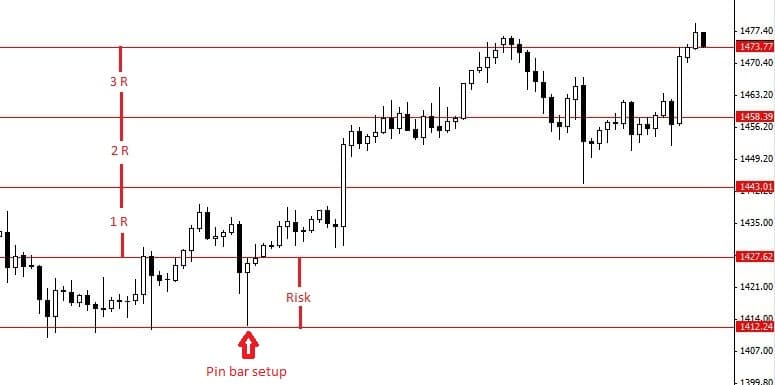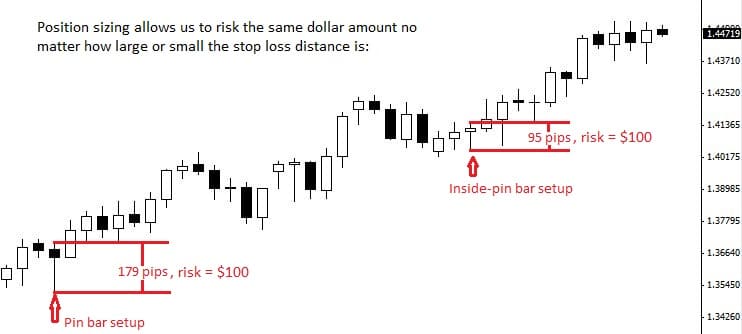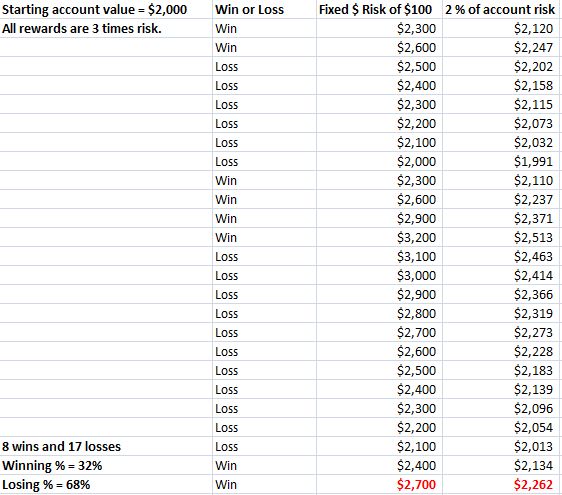Effective money management is the cornerstone of long-term success in Forex trading. It refers to the strategies and techniques used to control risk and optimize reward for every trade you place.
Without a solid understanding of how money management works—and how to apply it in practice—your chances of becoming a consistently profitable trader are minimal.
In this article, we’ll break down the key components of money management, including risk-to-reward ratios, position sizing, and the differences between fixed-dollar risk and percentage-based risk.
Understanding Risk-to-Reward: The Core of Profitable Trading
Risk-to-reward is one of the most powerful concepts in money management, yet many traders never fully harness its potential. Every trader aims to maximize rewards while minimizing risks, and mastering this ratio is a fundamental step toward consistent profitability. With the right understanding and application, risk-to-reward provides a practical framework for achieving long-term success.
The challenge is that many traders lack the patience to see its benefits play out over a large enough sample of trades. Risk-to-reward isn’t just about calculating potential gain versus loss—it’s about consistently targeting two to three times your risk (or more) on winning trades, knowing that over time, this can generate profits even if you lose the majority of the time. When combined with a high-probability trading edge, such as price action strategies, maintaining a 1:2 or better risk-to-reward ratio becomes a highly effective approach.
For example, let’s look at a 4-hour chart of Gold and a pin bar setup from a support level in an uptrend. Our stop loss is placed just below the pin bar’s low, and we assume a $100 risk. The trade eventually delivers a 3R return, or $300 profit. With a 1:3 risk-to-reward ratio, you could lose 18 out of 25 trades (72% loss rate) and still come out ahead by $300. The math is straightforward:
18 losing trades × $100 = -$1,800
7 winning trades × $300 = +$2,100
Net: +$300 after 25 trades.
The key takeaway is that you need the discipline to execute your trades consistently over a significant series to unlock the full potential of risk-to-reward. Most traders fail because they let emotions interfere—moving stop losses, cutting profits too early, or settling for 1R targets. This approach requires you to win a much higher percentage of trades just to break even.
Trading is a marathon, not a sprint. The traders who win the marathon are those who stick to a well-defined risk-to-reward plan and pair it with a proven trading method. Consistency, discipline, and patience are your real edge.
Position Sizing: Controlling Risk on Every Trade
Position sizing is the method of adjusting the number of lots you trade so your risk stays aligned with both your pre-determined dollar amount and your chosen stop loss distance. For new traders, this might sound a bit technical, so let’s break it down step-by-step.
1. Decide your risk per trade
Before entering a position, determine the exact dollar amount (or your local currency) you are comfortable losing on that trade. This is not a figure you should take lightly—losses are an unavoidable part of trading, and any individual trade can end up being a loser. You must genuinely accept the possibility of losing this amount without emotional distress.
2. Place a logical stop loss
Your stop loss should be based on market structure, not your desired lot size. For example, with a pin bar setup, the stop is typically placed just beyond the tail of the pin bar, or past a significant support or resistance level. The goal is to place it where the trade idea is invalidated if price hits that level. Never place your stop arbitrarily closer just to increase position size—that’s trading from greed, and it will almost always backfire.
3. Calculate your lot size
Once you have your risk amount and stop loss distance, determine the lot size that matches your risk. For instance, if one mini-lot is worth $1 per pip, a $100 risk with a 50-pip stop would require 2 mini-lots ($2 per pip × 50 pips = $100 risk).
The golden rule here is never adjusting your stop loss to fit your position size—always adjust your position size to fit your pre-set risk and logical stop.
A major benefit of position sizing is that it keeps your dollar risk consistent across trades, regardless of stop loss size. A wider stop doesn’t mean risking more money, and a tighter stop doesn’t mean risking less. You simply change the lot size to keep your risk fixed. Many beginners overlook this and mistakenly assume larger stops mean larger risk automatically.
For example, on the EUR/USD daily chart, two different setups—a pin bar and an inside-pin bar—might require different stop loss distances. But with proper position sizing, you could risk the exact same amount on both trades.
Fixed Dollar Risk vs. Percentage Risk Models
Fixed Dollar Risk Model – In this approach, a trader decides on a set dollar amount they are willing to lose on any single trade and risks that same amount consistently, only changing it if they intentionally adjust their risk tolerance.
Fixed Percentage Risk Model – Here, a trader risks a set percentage of their account balance on each trade (commonly 2–3%). As the account grows, position sizes increase; as the account shrinks, position sizes decrease.
While the percentage risk model can help limit losses during a drawdown, it often slows recovery because trade sizes get smaller as the account balance drops. This can create a psychological trap where traders feel it’s “safe” to take more trades, simply because they’re risking less per trade in dollar terms. The problem is that this often leads to taking lower-quality setups and becoming less selective—an easy path to more losses.
Another limitation of the percentage model is that account size doesn’t necessarily reflect true risk capacity or overall net worth. In professional trading, an account is essentially a margin account—funded only with enough capital to meet margin requirements—not an exact representation of total available trading capital.
The fixed dollar risk model, on the other hand, offers stability and clarity. It allows professional traders to maintain a consistent income approach, regardless of account fluctuations. Many pros also withdraw profits regularly, returning their account to a baseline balance. This keeps risk consistent in real-world terms while enabling steady income generation.
When combined with mastery of a trading strategy and disciplined application of risk-to-reward principles, the fixed dollar model can provide a powerful foundation for sustained profitability.
Example: Fixed Dollar Risk vs. Percentage Risk
Let’s compare two hypothetical traders over 25 trades—one using a fixed $100 risk per trade, the other using a 2% account risk model. The 2% figure is a popular choice among newer traders, but here it serves to highlight the difference in growth potential between the two approaches. In reality, each trader should determine their own fixed dollar risk based on what they’re genuinely comfortable losing per trade.
When we run the numbers, the fixed dollar model comes out ahead. Yes, during a losing streak your account will draw down faster with fixed dollar risk, but the upside is equally significant—you recover faster and compound gains more quickly during winning streaks. For traders who have honed their skills and trade selectively—like a “sniper”—long strings of losses are unlikely, making the fixed $ model more advantageous over time.
To put it into perspective:
If you win 50% of the time over 25 trades with $100 fixed risk on a $2,000 account, you could end up with around $4,500.
If you win 50% of the time over 25 trades with 2% risk on that same $2,000 account, your balance might only reach $3,300.
Professional traders often prefer the fixed dollar approach because they trust their strategy, avoid over-trading, and maintain disciplined risk control. They know exactly what they stand to lose per trade and plan accordingly.
By contrast, traders using the percentage risk model sometimes fall into a subtle trap—because their dollar risk decreases after losses, they feel it’s “safer” to take more trades. This often leads to lower-quality setups, over-trading, and slower account growth compared to the more disciplined fixed $ trader.
Conclusion
Success in Forex trading requires more than just knowing the theory—you must deeply understand risk-to-reward, position sizing, and how much you’re willing to risk on each trade. More importantly, you need to apply these principles with discipline and consistency. When combined with a clear, effective trading method such as price action, this approach forms a solid foundation for long-term profitability.





